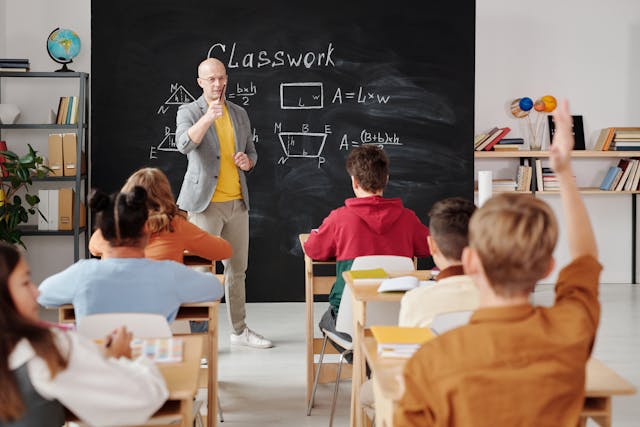- Policies must provide equitable resources and opportunities to all students for a fair education.
- Investment in early childhood education is crucial for laying a strong foundation for all learners.
- Equitable school funding and support services are essential to address educational disparities.
- Recruiting and retaining high-quality teachers in underserved areas is key to improving educational outcomes.
- Continuous investigation into the effects of school choice on student performance is necessary to ensure equity.
The choice of where to send a child to school is one that parents worldwide grapple with, making it a decision of profound importance. But what difference does the school environment make for a child’s education and future? In this comprehensive exploration, we’ll unravel the influence of various educational environments on student performance. From traditional public schooling to burgeoning models like charter schools and homeschooling, each has its own set of impacts that can significantly affect how students thrive academically.
The Diversity of School Types
Before comparing their impacts, it’s essential to understand the fundamental nature of each school type.
Traditional Public Schools
Traditional public schools are the bedrock of education systems worldwide, funded by local, state, and federal taxes. Their governance typically involves elected school boards and implemented curriculum standards. While public schools are meant to provide a universal education, disparities in funding and resources can lead to varied student experiences and outcomes.
Private Schools
Private schools, characterized by their independence from government funding, often have a religious or specialized educational focus. They operate under the governance of a board of directors and are financed through tuition fees and charitable donations. The environment is typically more exclusive, with smaller classes and a more rigorous curriculum.
Magnet Schools
Magnet schools are public schools with specialized courses or curricula that attract students from different districts. These schools often receive additional funding to support their specialized programs, which can focus on specific areas of interest ranging from STEM disciplines to the arts. The goal is to bolster integration and promote a diverse learning community while offering a unique educational approach.
Charter Schools

Charter schools bridge the gap between public and private education. They are publicly funded but operate with more autonomy than traditional public schools, steering clear of some regulations in exchange for greater accountability for student performance. Reputable charter schools are known for fostering innovation and can range from highly successful models to highly controversial outliers in the academic landscape.
Homeschooling
While not a traditional school, homeschooling is a growing educational paradigm in which students are taught at home by parents or tutors, following a curriculum approved by state education agencies. Homeschooling offers a highly personalized learning experience and allows for flexibility in education methods and timing.
Comparing the Performance of Different School Types
To comprehensively compare the performance of different schools, we must consider various factors and metrics.
Factors Impacting Student Performance
Numerous factors outside of school type can influence a student’s academic success. Socioeconomic status, parental involvement, and teacher quality are among the most critical. The challenge lies in untangling these complex relationships to attribute success or failure to the educational institution alone.
Performance Metrics
Performance metrics serve as yardsticks to measure school effectiveness. High-stakes standardized test scores, graduation rates, and college acceptance rates are commonly used to gauge student performance across different school types.
Performance Comparison
Standardized test scores reveal variances among different types of schools, with results often correlating to socioeconomic factors. However, teacher quality and curriculum disparities can also play a significant role. While private schools and charters tend to demonstrate higher overall performances, some magnet and public schools outperform the sector average, emphasizing the importance of unique programs and individual effort.
The Role of School Choice in Student Performance
 School choice empowers parents to select the best-fitting educational option for their children. This freedom can lead to positive outcomes, particularly for students struggling in a traditional environment. However, if not all families have equal access to high-quality choices, it can also exacerbate inequalities.
School choice empowers parents to select the best-fitting educational option for their children. This freedom can lead to positive outcomes, particularly for students struggling in a traditional environment. However, if not all families have equal access to high-quality choices, it can also exacerbate inequalities.
Socioeconomic Factors and Educational Equity
A deeper examination of socioeconomic factors unveils the intricate educational equity challenges and opportunities. A family’s socioeconomic status (SES) shapes a child’s academic trajectory. This includes access to resources such as books, technology, and extracurricular activities, which enrich a student’s learning experience. Furthermore, SES often determines a child’s early learning opportunities, nutrition, and healthcare, foundational to cognitive development and school readiness.
The variation in school funding models exacerbates these disparities. Schools in affluent areas receive more funding through property taxes, translating to better facilities, more qualified teachers, and a wider array of programs and resources. Conversely, schools in lower-income areas suffer from underfunding, leading to larger class sizes, fewer resources, and less experienced teachers. This creates a cycle of inequality that hampers the efforts to close the educational achievement gap.
To address these issues, policies, and initiatives must level the playing field by providing equitable resources and opportunities to all students, regardless of their socioeconomic background. This includes investment in early childhood education, equitable school funding, support services for low-income families, and targeted programs to recruit and retain high-quality teachers in underserved areas. We can only strive towards a more equitable and just educational system through a concerted effort to tackle the root causes of educational inequality.
School choice is complex and personal, with no one-size-fits-all answer. While certain types of schools may offer structural advantages, the commitment and support of educators, administrators, and parents within any system are the true catalysts for student growth. By recognizing the strengths and weaknesses of different school types, we can work towards creating an educational environment where all students have the opportunity to excel. It’s clear that as we move forward, it’s vital to continue investigating the nuanced effects of school choice on student performance, ensuring every child has the chance to reach their full potential.